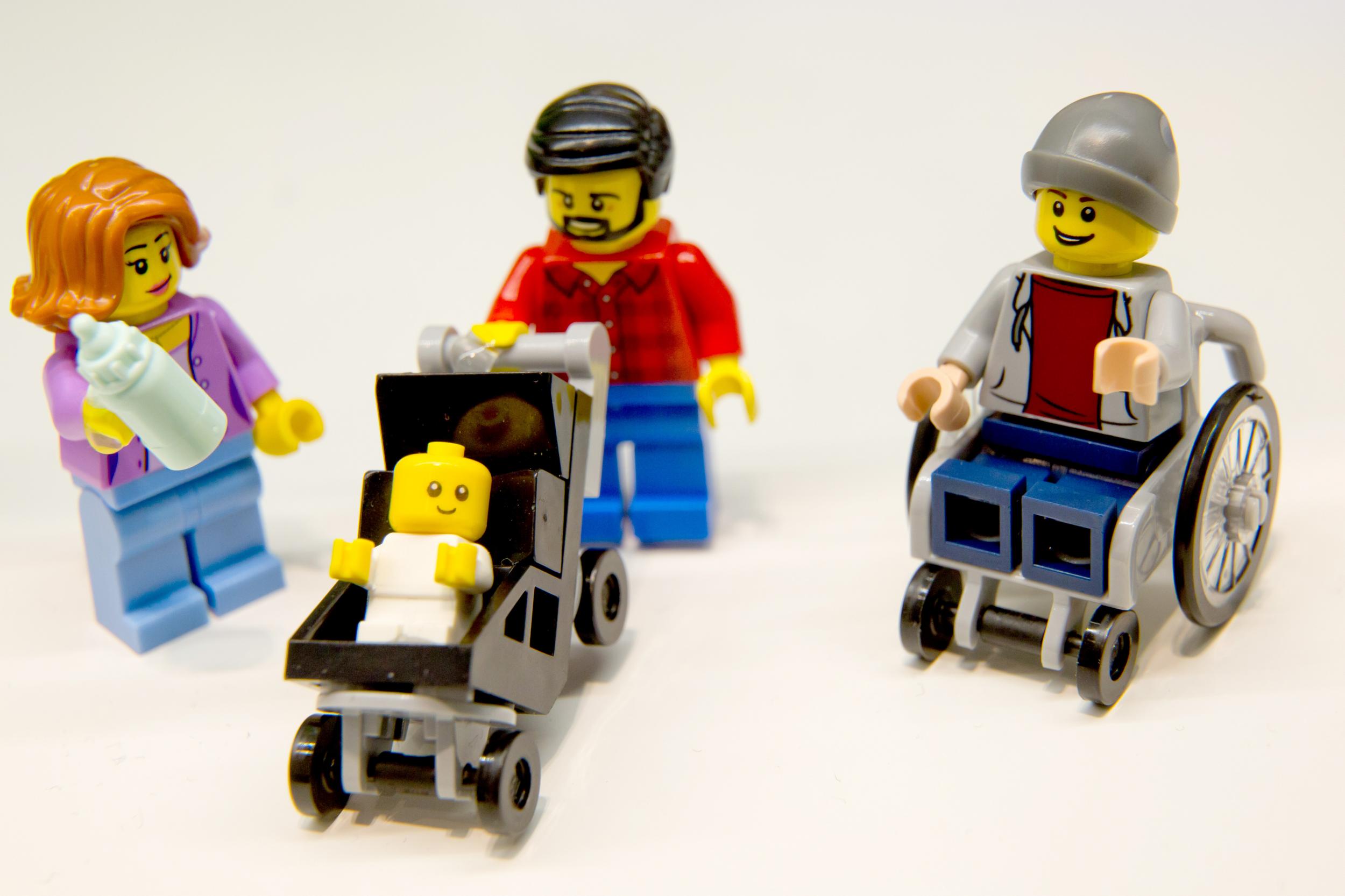With its new disabled figure, Lego has approached diversity issues in a very different way to Barbie
Unlike Barbie’s new range, unveiled with an exclusive in TIME magazine and more press embargoes than Barbie has convertibles, Lego’s latest character was simply placed in the middle of a busy park scene, sitting in his wheelchair as if it were the most natural thing in the world

With its Simpson-yellow face, square, boxy legs and clamp-like hands, the character at the centre of a “Fun in the Park” set from the Lego City range looks just like any other Lego figurine. Clad in a beanie and positioned next to an ice-cream vendor, a cyclist and countless picnickers, it’s hard to find anything remarkable about him…apart from two things. The first is the “helper” dog positioned next to him. And the second? That he is sat in the first wheelchair moulded at Lego mini-figure scale in the company’s history.
It might have been designed for a small mini-figure just shy of an inch and a half tall, but the latter is a giant move, and not just for the eighty-four year old Danish company. Until now, disability has been scarcely represented in the toy-box, despite the fact that there are 770,000 children in the UK with disabilities and more than 150 million worldwide.
The global population of Lego alone stands at 4 billion. There’s also Playmobil, Barbie, Sylvanian families and countless other brands whose miniature figurines are scattered across carpets worldwide. But when was the last time a microscopic hearing aid was lost forever after being sucked up by the vacuum-cleaner? Or a miniature white-cane was discovered down the back of the sofa? Or a plastic guide dog had to have his leg PVC-ed back on after accidentally being trodden on?
On the rare occasions when disabilities do feature, they appear under predictable guises. They are represented as elderly grandparent dolls with teeny-tiny walking sticks, villainous pirates with eye-patches, or as a symptom of a temporary state; wheelchair confinement and/ or bandages and crutches after some imaginary accident that a trip to a miniature replica hospital can fix. Take, for example, the Lego Education Community Set. It has a wheelchair, granted, but the wheels don’t turn, it’s grey, monotone and clinical in its appearance and it reinforces the notion that being wheelchair-bound is the preserve of the elderly by having an elderly figure in the chair in all of its advertising.
Search for a positive or everyday representation of permanent disabilities and, until today, you’d have been hard-pressed to find one, sending a message to the aforementioned 150 million children with disabilities worldwide that they are invisible. Excluded and marginalised by toys, which supposedly exist to help nurture impressionable identities and imaginations, how are disabled children supposed to develop a sense of self-esteem when their experiences aren’t reflected in their immediate surroundings?
For “Toy For Me”, an online campaign to increase and improve disability representation in toys founded by journalist Rebecca Atkinson in April 2015, the new figure is a monumental moment. Although Playmobil became the first global brand to back the campaign, aiming to produce a line of characters that positively represent disability for release in 2016/17 and Makies, the world’s only producers of 3D printed toys, started to produce a series of disability accessories for their existing dolls last year, Lego’s beanie-clad character in a wheelchair is the first physical example of a global giant portraying a disability as something incidental and everyday. “We’ve got genuine tears of joy right now ... Lego have just rocked our brick-built world!” organisers wrote on their campaign page upon hearing the news.
But the new Lego character isn’t the only recent example of increasing diversity in the toy industry. Just last week, Mattel, the second largest global toy manufacturer after Lego, announced the introduction of “Tall”, “Petite” and “Curvy” Barbie dolls to their existing range.
According to Evelyn Mazzocco, Senior Vice President and Global General Manager at Barbie, the 33 new dolls, with their 30 hair colours, 24 hairstyles, 22 eye colours, 14 face shapes, seven skin tones and four body shapes “represent a line that is more reflective of the world girls see around them -- the variety in body type, skin tones and style allows girls to find a doll that speaks to them".
They also conveniently reflect the rivalry between the two companies. While sales in Barbie dolls have been in free fall for the past two years, Lego Friends, a line of toys designed to teach girls to build, boosted Lego above Mattel as the biggest toy company in the world in 2014. And while Barbie, whose current “I Can Be” careers range includes the hardly progressive “Babysitter” and “Pop Star”, has been accused of failing to include enough diversity among their new dolls, Lego has been praised for encouraging girls, as well as boys, to pick up their tiny bricks.
Now, Lego has been praised again for making huge strides forwards with one small figurine. But unlike Barbie’s new range, unveiled with an exclusive in TIME magazine and more press embargoes than Barbie has convertibles, Lego’s latest character was simply placed in the middle of a busy park scene, sitting in his wheelchair as if it were the most natural thing in the world.
As other companies make grand, sweeping gestures towards their commitment to diversity, it’s this that might just be the biggest step forwards.
Join our commenting forum
Join thought-provoking conversations, follow other Independent readers and see their replies
80Comments